
Air Force Report : Lebanese Air Force
Lebanese Air Force
القوات الجوية اللبنانية
Al-Quwwat al-Jawwiya al-Lubnania
Force Aérienne Libanaise
Introduction
Almost as big as Scotland, situated on the most Eastern extremity of the Mediterranean in an area considered to be the cradle of humanity, a constant crossroads of peoples and religions, and for decades tormented by conflict and wars which at times have menaced its actual existence, and held tight between two powerful neighbours, this is the Lebanon.
The historical machinations of this area of the Middle East have always been complex, influenced from the beginning of ancient history by the conquest of Kings and Emperors. Populated by the Phoenicians, it was incorporated into the Roman Empire, then home to the Crusaders and territory within the Ottoman Empire until the last century, when the Great Powers, emerging victorious from the First World War, marked out its recent history. It was amalgamated into the Greater Syria, which remained under French control until after the Second World War, when its independence, already declared in 1943, became effective.
Characterised by the relative economic prosperity of its capital, Beirut, and considered to be the true financial and commercial centre of the Middle East, the country has fluctuated between periods of political stability and grave internal disorder which occasionally breaks out into real civil war.
The Lebanon, Al-Jumhuriyya Al-Lubnaniyya or République Libanaise in the two official languages, Arabic and French, has today almost four million inhabitants residing in the country, while some eighteen million Lebanese are dispersed throughout the world, the majority of them of the Christian religion.
In order to understand this country, it is essential to study it ethnic and religious components: the three major single deity religions, Islam, Christian, and Judaism, are present in some eighteen variations, which attract numerous ethnic communities. There was a period when the Christians formed the majority of the population, but today it is Islam that attracts 60% of the Lebanese population.
A parliamentary republic when the President of the Republic shares executive power with the Prime Minister, the most important element in its political system is religious representation, with parties based on the religion of the voter. This is the principal driver of political representation and the legal system, with parliamentary representation mirroring both geographic and religious affiliation on both a national and local level. This equilibrium is occasionally dangerous and difficult to manage, particularly in the complex political and cultural turmoil of the Middle East.
The civil wars of 1978 and 1982, the assassination of President Gemayel, the massacres of Sabra and Shatila, the emergence of Hezbollah, and more recently the assassination of Rafiq al-Hariri and the air-land invasion by Israel in the summer of 2006 aimed at blocking attacks by Hezbollah militia have forced the UNO to send its own inter-positional and control forces, UNIFIL, the Inter-positional Force in Lebanon, instituted with a UN Security Council resolution of March 1978, renewed in August 2006 following the Israeli attack. Immediately, in the same month, Operation Leonte was launched by the Marina Militare Italiana which, under a UNO mandate within the UNIFIL-2 mission, landed an Italian peace-keeping contingent utilising to the maximum its amphibious capability, and supported by the Gruppo Aereo Imbarcato.
In August 2010, UNIFIL's presence in Lebanon comprised a 31 nation contingent with 11,500 military personnel supported by more than 1,000 civilians.
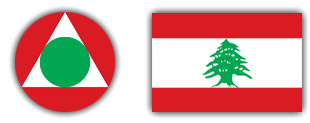
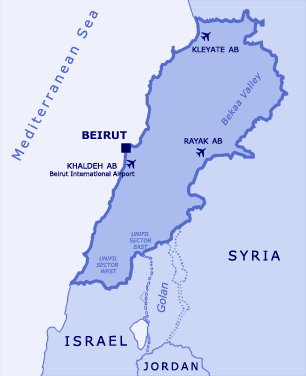
The Lebanese Air Force
The Lebanese Armed Forces, Al-Quwwāt al-Musallaḥa al-Lubnāniyya, are constituted by the three classic components, Army, Navy, and Air Force under the motto "Honour, sacrifice, and loyalty". Obviously the mission of the services is to defend Lebanese territory and citizens from external threats, the maintenance of stability and internal security combating threats against the vital interests of the nation, contribution to social development, and rescue operations.
The Lebanese Air Force, Al-Quwwat al-Jawwiya al-Lubnania or Force Aérienne Libanaise (FAL), operates under the command of General Ghassan Chahine and, with its headquarters in Beirut, possesses a force of around 1,000 men stationed at three operational bases: Beirut AB (OLBA), Rayak AB (OLRA) and Kleyate AB (OLKA). It was created in 1948, seven years after the nation became independent (26 November 1941) because of the Arab-Israeli conflict and the subsequent state of severe tension with Syria, and was placed under the command of General Emile Boustany, who negotiated the acquisition of its first aircraft with Britain and Italy.
The first aircraft to fly under the cedar tree flag of the Lebanon was the Percival Proctor, two examples of which were delivered (L-101/L-102), followed by four Percival Prentice (L-103/L-106), assigned to a training squadron at Rayak, at the time the sole base and a historic airport in the Bekaa Valley. On 1 September 1949 a Macchi MB.308 (L-109) arrived from Italy, followed quickly by the first of four Savoia-Marchetti S.79L (Libano) (LR-AMA, LR-AMB, LR-AMC, LR-AMD, later L-111/L-114), which were used to constitute 1 Bomber Squadron, albeit that the use of the S.79 was essentially restricted to training and transport.
In the early fifties the use of the Macchi (as it was commonly known), formerly agreed as part of the purchase contract, was extended to include the struggle against the malaria mosquito present in the Bekaa valley, and it was used to spray insecticide in the Ammik marshes, producing positive results in the reduction of infection levels.
In the early years of the organisation and constitution of the flying equipment of the Lebanese Air Force, Britain was the principal supplier.
In 1951 an example of the de Havilland DH.104 Dove arrived (L-110), utilised as a navigation trainer, transport, and photo-mapping aircraft: it was followed one year later by the first six Harvard (T-6 Texan) trainers drawn from RAF stocks, which replaced the Percival fleet. Other examples progressively joined the fleet until it reached a total of sixteen machines (L-120/L-135): of these, probably six were donated by Iraq.
The year 1953 represented the moment of passage to jet aircraft, with the introduction of the first six de Havilland Vampire, which contemporarily required the construction of a second base at Beirut international airport, known today as Khaldeh Air Base. During the following years the Vampire fleet rose to sixteen examples (L-150/L-165), comprising four FB.5, five FB.52 and three FB.9, plus four two-seat T.55 (L-151, L-154, L-159, L-160); these remained operational until the sixties, while the last two trainer versions were retired at the start of the seventies.
Between the fifties and sixties the initial training fleet was reinforced with six new de Havilland Chipmunk, in T.20 and T.30 versions (L-106/L-108 and L-181/L183, later L-101/L103), with the last flight of the type occurring in 1974.
These were the years of enormous development for this small air arm, development which culminated in the sixties. An internal study to identify and procure a modern fighter and ground attack aircraft resulted in the selection of the Hawker Hunter. The purchase, financed by the United States, came to fruition in 1959 with the delivery of the first six examples, F.6 versions drawn from RAF stocks. In 1966 a second batch of seven aircraft arrived, this time coming from the Belgian Air Force, and comprising four single-seat and three two-seat aircraft upgraded to F.70 and T.66 respectively. Much later, in 1975, deliveries commenced of a final batch of six Hunters to replace the losses suffered both in normal operations and in combat: these were ex-RAF F.6 versions upgraded to F.70 standard, and the last of the six arrived only in 1977 due to the uncertainty generated by the Lebanese civil war. An overall total of 19 Hunters were received (L-170/L-179, L-280, later L-286, L-281, later L-287, L-282, passed to Jordan, and L-280/L-285: from 1974 all the L-17* codes became L-27*), and they armed 1 and 2 Squadrons.
The excellent Hunter represented the longest serving and most loved combat aircraft to serve with the Lebanese Air Force, being utilised intensely for ground attack missions in 1973, 1976, 1983 and 1984, and also found itself engaged in air-to-air combat with Israeli jets, managing to shoot down one. During the hostilities between 1983 - 1990 they were deployed to what would become known as the Halat base, a section of motorway north of the capital near Byblos, together with Bulldogs and Magisters, where the personnel and aircraft managed to demonstrate exceptional operational qualities and flexibility. Losses and flying accidents (the last occurred in 1989) resulted in a considerable reduction of the numbers in the fleet, and in 1994, following an incident on take-off involving a two-seater, the remaining eight Hunter were laid up and stored at the Rayak base. Despite their age, and the extreme shortage of spare parts, the excellent Hunter was taken out of retirement, re-appearing on the flight line in November 2008 as a result of the hostilities: today four operational examples are based at Rayak, three F.70 (L-280, L-282, L-284) and one T.66 (L-286), making the FAL the last service to continue to fly the stupendous aircraft.
During the sixties, in expectation of the arrival in the future of a jet fighter fleet, the necessity to possess an advanced trainer became apparent. The choice fell on the Fouga CM-170 Magister, five of which were delivered in 1966 (L-440/L444, later L-400/L-404), followed in 1972 by others provided from German Luftwaffe stocks (L-601/L-605). From 1974 the serial range was changed to L-600/L-608. Used actively until the early nineties, today four examples are held in store in a hangar at the Rayak base, in the not too remote possibility that they might be returned to service.
The helicopter component, which would be revived and reinforced in more recent years, made its first appearance between 1959 and 1960, following the purchase in France of four Sud Aviation SA-318 Alouette II (L-201/L-204, later L-301/L-304) and some 14 SA-319 Alouette lll (L-220/L-233, later L-320/L-333) in two batches, one in 1961 and the other in 1969. On that occasion, the Beirut base was reconstructed to accommodate the infrastructure necessary to house 3 Squadron, which had been newly created to operate the new helicopters at Rayak.
During the same period the new and modern base at Kleyate was constructed, utilising the airport north of Tripoli, close to the border with Syria, considered at the time one of the most advanced bases in the region. Here, in 1968, the first two Dassault Mirage III jets landed, flown in by two Lebanese pilots direct from France, and by the end of the following June deliveries of all twelve examples had been completed, ten single seat EL and two two-seat DL (L for Lebanon) (L-501/L-512, later L-401/L-412), which were placed under the charge of 5 Squadron.
The leap in quality and performance of the French bi-sonic fighters over their jet-engined predecessors was enormous, paralleled by the related maintenance cost, which required the provision of significant economic resources that were difficult to justify in the precarious economic situation generated by the civil war. Because of this, the Mirage flew with the FAL until 1978, and was then grounded: after a long period in storage, they were sold to Pakistan in 2000. Over their decade of operational service, the French deltas were intensely utilised on combat operations, including bombing attacks, and suffered the loss of two examples, an EL and a DL, through accidents.
The seventies represented an era when the country turned to Italy for its supplies. It was, in fact, decided to equip 5 Squadron, (4 Squadron having been assigned the Mirage) with the Agusta-Bell AB.212, the first six of which would arrive at the Beirut base between 1973 and 1974 (L-250/L-255, later L-550/L-555), becoming quickly assigned to transport and search and rescue duties: more followed in 1979. Several examples were damaged or lost during the hostilities, and towards the end of the nineties five examples were stored, awaiting spare parts that would permit their return to use. To this end, in January 2009, following a meeting between Italian Minister of Defence Ignazio La Russa and Elias el-Murr, it was announced that Italian government finance would enable the acquisition of the spare parts required to allow the surviving AB.212 to resume operations.
Under the aspect of basic training, the increasing age of the Harvards/Texans and Chipmunks necessitated a renewal of the fleet, and, in accordance with tradition, the choice inevitably fell on a British trainer, the Scottish Aviation Bulldog which, after more than thirty years honourable service, continues today to be used to select the young pilots for the Rayak school, although out of the original six (L-141/L-146) only three remain operational, with two being lost in accidents and the third shot down while flying over hostile territory.
The enormous financial requirement that would have been necessary to achieve even a partial modernisation or rationalisation of the fixed wing fleet, and the succession of internal wars and disorder that fractioned the control of national territory created the necessity to provide increased mobility to the land forces, and obliged the spending choices of the FAL to be prioritised on new and more substantial acquisitions of rotary winged aircraft.
In 1980 at the Beirut base, 9 Squadron was constituted coincidental with the arrival of the first six Aérospatiale SA-330 Puma, at least some of these being of IAR manufacture, followed between 1983 and 1984 by another six (L-901/ L-907, L-909, L-911/L-915), while a further ten IAR-built examples were delivered from the United Arab Emirates during 2010.
Almost simultaneously 8 Squadron was constituted in order to receive the first attack helicopters armed with heavy machine guns or cannon, HOT anti-tank missile, and un-guided rockets: these were four Aérospatiale SA-342 Gazelle, followed in 1983 - 1984 by another four of the 'K' version (L-800/L-807). The final arrival of nine SA-342, drawn from surplus United Arab Emirate stocks, commenced in March 2007, and they were originally assigned to the fleet of the Squadron in their original desert colour scheme (L-808/L-816).
The FAL could certainly not lack the robust and reliable workhouse helicopter that only the Bell UH-1H Iroquois has proven to be; between 1995 and 2001 some twenty four examples (L-1001/L-1012, L-1101/L-1112) drawn from surplus U.S. Army stocks have been used to arm four Squadrons, 10, 11, 12 and 14. Used intensively for transport and supporting ground forces, they can also be armed with Matra SNEB 68mm rocket launchers and machine guns: in particular, during the battle of Nahr el-Bared in the summer of 2007 they were transformed into real bombers. The requirement to destroy the many fortified bunkers present in the area forced the FAL to modify a few UH-1H to be capable of carrying a payload of two free-fall 227 kg bombs and one 400 kg bomb. In this decidedly unusual, but profitable role, the results obtained by the "Huey" were so successful that the many missions flown continued for a period of some three months.
The training requirements for new helicopter pilots are satisfied by four Robinson R44 Raven II (L-1501/L-1504), serving with 15 Squadron at the Rayak flying school, and which constitute the most modern trainer presently serving with the force.
To complete the helicopter overview, the presence should be reported of three Sikorsky S-61N (AD-1601/AD-1603) on charge in the FAL with 16 Squadron at Beirut, but owned by Akdar Dayem (AD), a government organisation specifically created to counter wild fires, and the sole Agusta-Westland AW-139 (Cedar 1), donated by the Emir of Qatar, and utilised for presidential transport. Until a few years ago, government transport duties were performed by a Dassault Falcon 20 (OD-PAL), which had earlier replaced a Rockwell Turbo Commander 690 (L-701), lost in 1982.
For more than a decade, therefore, the FAL saw its operational fleet lacking any fixed wing aircraft, and only with the reintroduction of the Hunter, at least apparently, has an attempt been made to find a response to the requirement for air cover that would deliver control of national territory. More concretely however, in terms of modernity and efficiency, a first important step in this direction occurred in May 2009 with the delivery of the first example (N2126P, poi L-401) of the three planned AC-208B Combat Caravan. This militarised version of the Cessna 208 was developed for anti-terrorism and territorial patrol. Fitted with ISR apparatus, an MX-15 turret to acquire photographic, IR images and laser in all-weather conditions, it is armed with one or two AGM-114 Hellfire missiles: together with the AeroVironment RQ-11 Raven unmanned aerial vehicle, some twelve of which are being delivered, constitutes the new "sensor-to-shooter" system perfected by the FAL.
In the future, Lebanon hopes to complete a further renewal of its fleet which, according to the plans of the Chief of Staff Gen, Chahine, will be focussed on the reinforcement of the tactical component that supports its land forces, with a preference in this regard for the Hawker Beechcraft AT-6B Texan II (developed from the Pilatus PC-9), the performance of which is very similar to that of light jet aircraft, but with significantly lower operating costs. Because of the predominantly tactical focus of the FAL, but also in regard of the unsustainable operating costs, the offer from Russia of ten MiG-29 fighters was converted into a donation of six Mi-24 attack helicopters.
To resolve the present absence of a jet trainer, a Lebanese commission has moved towards the acquisition of a series of BAe Hawk, which has a good chance of coming to fruition, mainly due to the willingness of the United Arab Emirates to transfer ten of its T.63 variants. Another recently aired possibility, although probably unlikely to be realised, is the purchase of three reconditioned Aermacchi MB-339, drawn from the stocks of the Aeronautica Militare Italiano.
For their collaboration and exquisite hospitality, the authors would like to express their thanks to General Ghassan Chahine, Commander in Chief of the FAL, Colonel Pilot Ahmad Al Hadi, Base Commander, Rayak, Major Pilot Moussa Naddaf, Colonels Zahi Daoud, Basseun Yassine, and Kamil Faysal, and, finally, our appreciation goes out to our friend Vatche Mitilian for the indispensible help and assistance provided before, during, and after our visit.
Article by Federico Grattoni ( view portfolio ), Claudio Toselli ( view portfolio ) and Achille Vigna
Photos by Federico Grattoni ( view portfolio ), Claudio Toselli ( view portfolio ), Achille Vigna and Vatche Mitilian
Traduction from Italian by Frank McMeiken
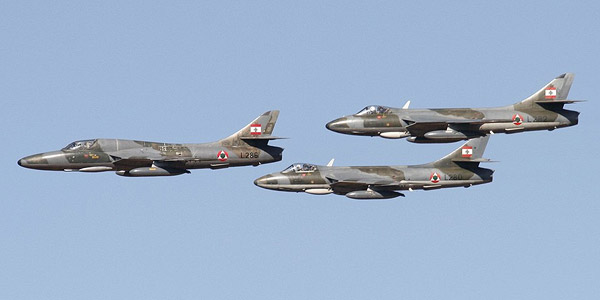
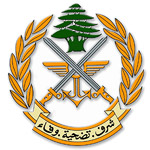
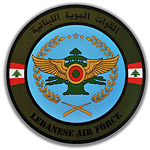
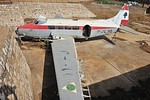
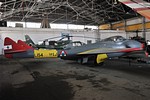
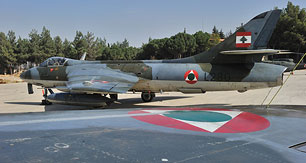
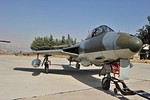
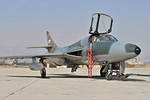
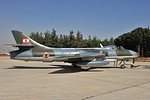
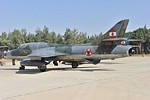
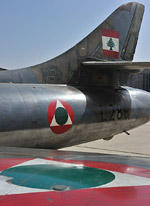
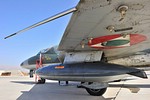
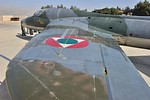
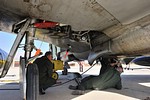
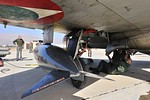
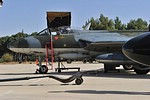
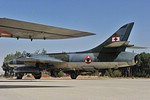
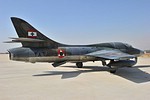
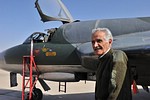
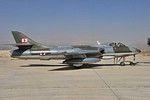
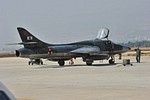
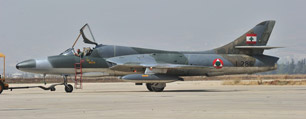
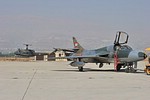
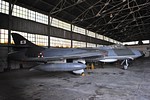
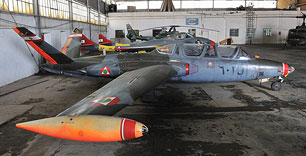
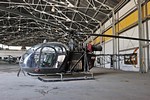
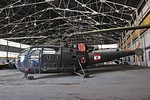
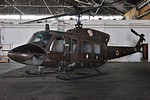
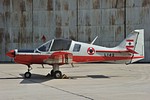
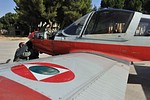
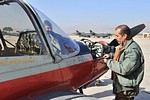
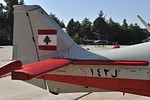
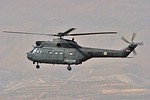
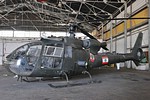
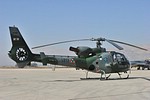
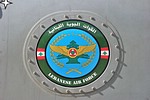
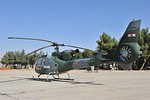
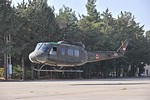
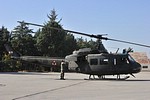
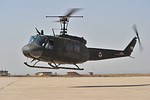
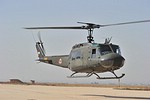
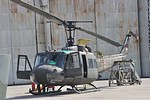
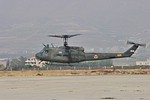
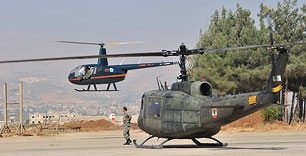
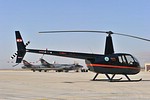
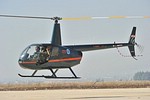
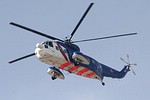
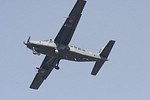
 Back to Index
Back to Index